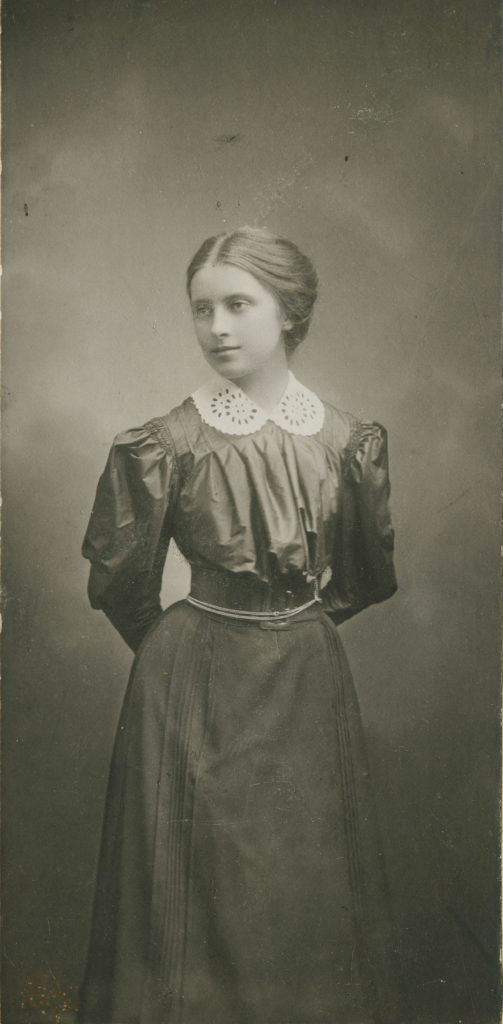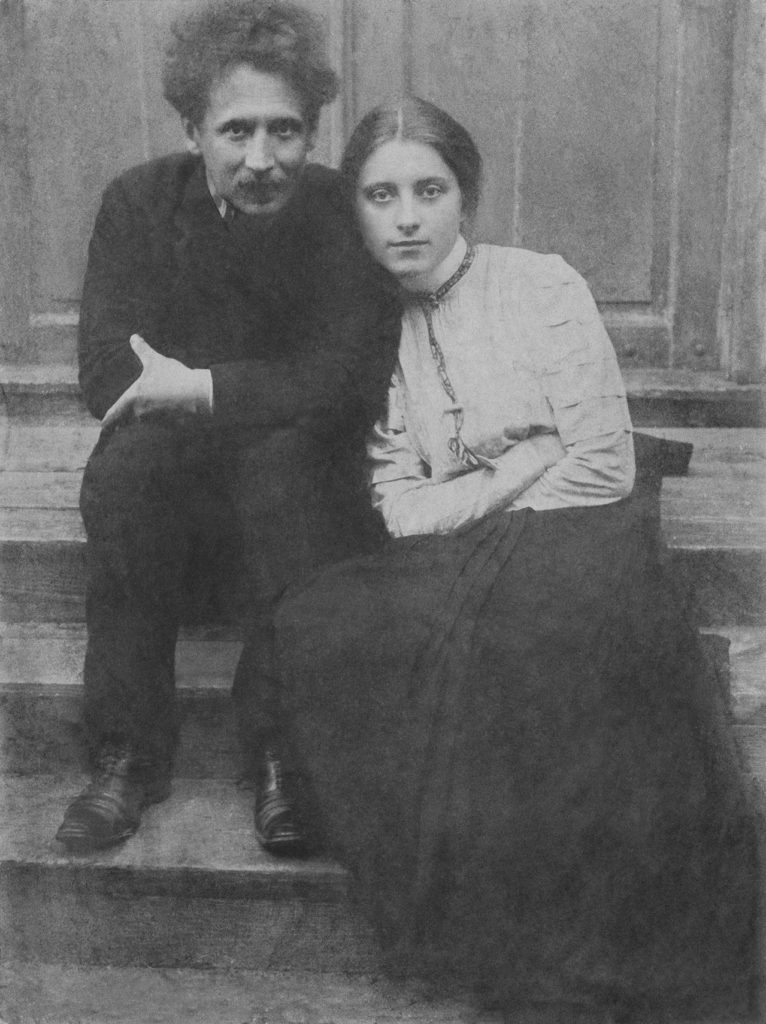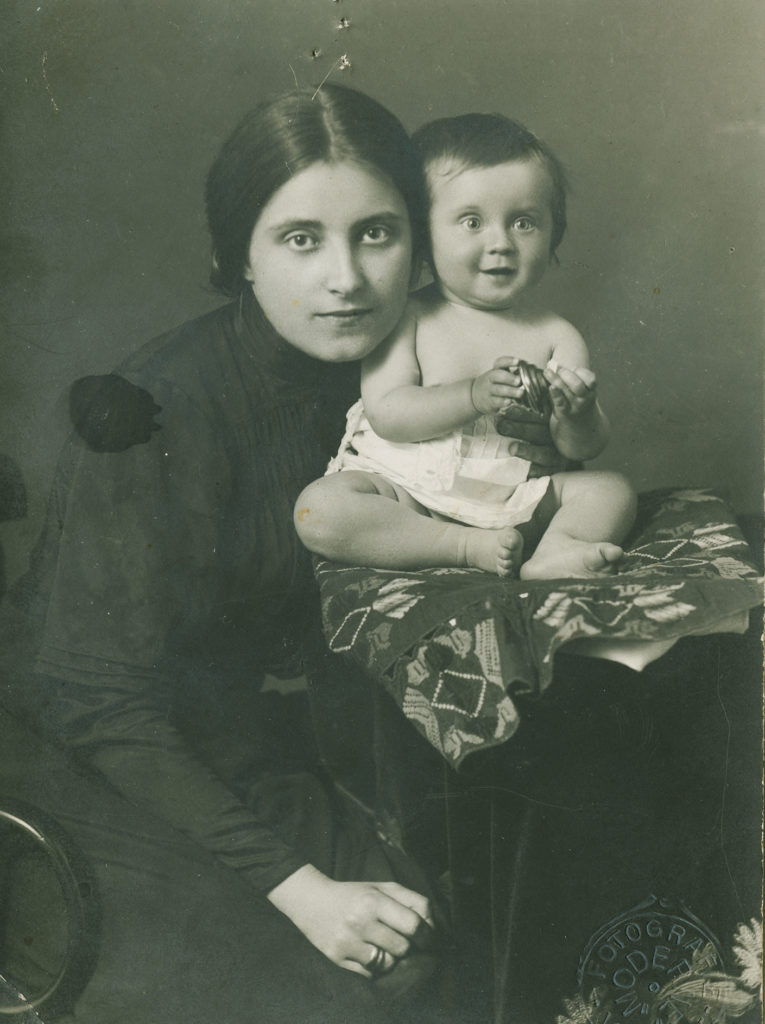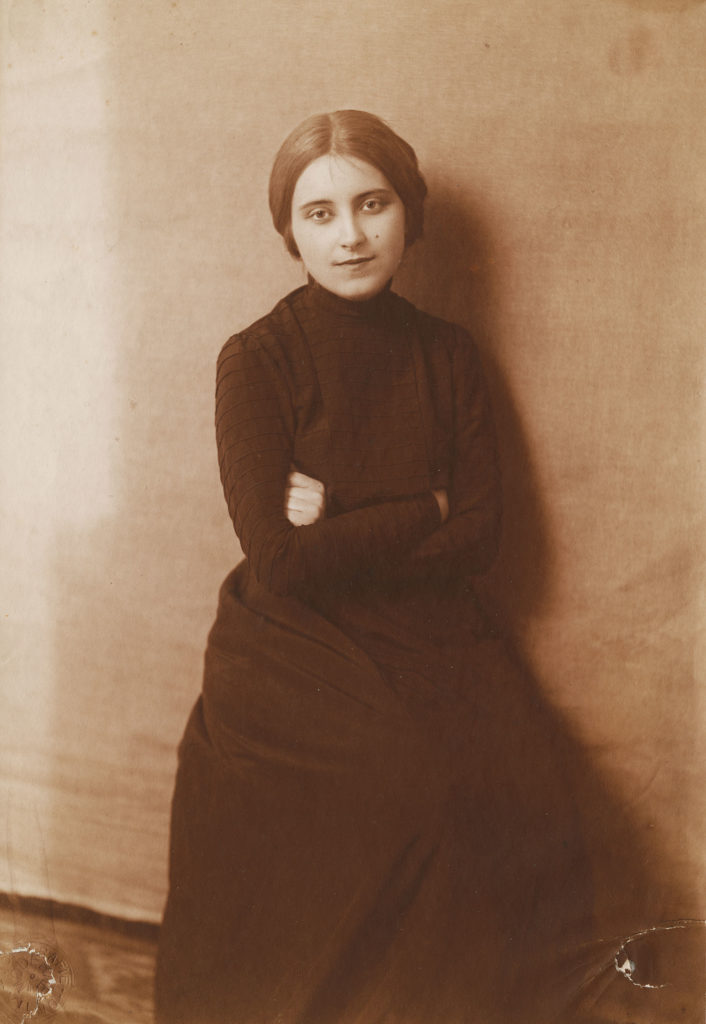„The Love of Sofija and Konstantinas”
This is an exhibition of wedding rings by Mikolas Konstantinas Čiurlionis and Sofija Čiurlionienė-Kymantaitė, which have never been publicly exhibited in Vilnius before, accompanied by fragments of their shared history, artifacts preserved by the family, photographs, memoirs and letters, excerpts of which were voiced by actors Vaiva Kvedaravičiūtė and Kristupas Biržietis. The exhibition aims to introduce one of Lithuania‘s most beautiful love stories, the indescribable friendship between two souls that was unexpectedly interrupted but never ended.
„This painful but very romantic story touched me seven years ago and has never let go. And now I can share it. I believe that a very true exhibition has come out. And all out of very great love, which in today‘s world is becoming a symbol of the highest form of art, of goodness, of beauty, and of unattainable perfection.” – exhibition curator Livija Krivickaitė.
„From Sofija‘s memoirs, we know well how spiritually and emotionally important was her first visit to Čiurlionis‘ room in Savičius Street in the early spring of 1908… How deeply they both experienced the budding sense of togetherness. It is symbolic that it is to this very room that the Čiurlionis‘ wedding rings and other historical documents, testifying to that magical time in the creative path of the two artists, have returned after more than a hundred years, like signs of eternal love. And the exhibition, which tells a common story in image, word, and sound, will, I believe, leave no one indifferent…” – Rokas Zubovas
„<…> I know that there are no obstacles we cannot overcome and no peaks we lack the courage to climb.” (From M. K. Čiurlionis‘ letter to Sofija, 26 November 1908, St. Petersburg)
For a quality exhibition experience, a smartphone and headphones are required. For the rare opportunity to expose the rings and other exhibits, we are grateful to the Sofija Čiurlionienė-Kymantaitė Memorial Museum and Dalia Ona Zubovaitė-Palukaitienė.

Mikalojus Konstantinas Čiurlionis, 32 years old, a promising composer, a graduate of two conservatories, moved from Warsaw to Vilnius in 1907, where he hoped to work for the sake of culture, to organize and strengthen the Lithuanian community. In the same year, a young 21-year-old girl, Sofija Kymantaitė, a budding writer, moved to Vilnius from Krakow in Poland. At the beginning of the year, during the first Lithuanian Art Exhibition, Sofija only watched the artist from afar, who was unaware at the time that the deep sea eyes of his future wife were focused on him. In the autumn, Sofija wrote a letter to Čiurlionis, inviting him to play music at the Vincas Kudirka‘s commemoration event in Vilnius. Konstantinas accepted her offer without hesitation. At the commemoration event, Ms. Kymantaitė had the honor of finishing his oral part, after which Čiurlionis performed his own compositions. When he had finished playing, he found Sofija, sat down next to her, and said: „Your speech, madam, was very beautiful – I decided, after listening to you, that you would teach me Lithuanian”. As Sofija later testified in her memoirs, this encounter was a fateful one: „All right – I replied in a rather calm manner”.
Thus was born a love story that unfolded over a period of just three and a half years, and which was suddenly interrupted but never ended.

In 1908, the two of them held Lithuanian language classes in Sofija‘s small room in the present Pamėnkalnio street. Konstantinas was living in Savičiaus street at the time. At this distance, the student would go to his teacher for Lithuanian lessons, and the music lover would go to the composer to listen to the tones of the music that were meant for her alone. Eventually, warm feelings were born in the hearts of both young artists.
Vilnius is of great importance in the love story of Sofija and Konstantinas. Long walks along the Neris, the preparation and meticulous joint work on the second Lithuanian Art Exhibition, the dawn on the hill of Gediminas Castle, watching Vilnius in the rays of the rising sun, the boat rides near Trakai Castle, the streets of the Old Town walked around far and wide, the shared dream of a „House of the Nation” on the Tauras Hill, the fostering of Lithuanian community and culture, the silent goodbyes at the gates of Sofija‘s house – under the sky of Vilnius, a great love was born that changed the lives of these two people forever

The night in early June, spent on the hill of Gediminas Castle, is very significant because it was then that Sofija and Konstantinas agreed to exchange rings and spend the summer together in Palanga. In the morning, Konstantinas hurried to Druskininkai, because the room that he had in Vilnius was dark and unsuitable for painting, and the new compositions of the paintings were already stirring his imagination. On the way to the station, he remembered that he needed to take a photograph and went to the first photographer he could find, where his tiredness, his sleepless night, and his disheveled hair were captured. This photo became one of the most famous, but neither Sofija nor Konstantinas liked it because of the anxious way it appeared, which is so well reflected in the photo. Konstantinas went to Druskininkai and painted furiously, while Sofija traveled to Plungė to see her uncle, the priest Vincentas Jarulaitis, to whom she had first told about the engaged couple‘s plans to start a family. The uncle, who supported Sofija‘s studies and took care of her welfare, was of course concerned about the material side, but Sofija did not give up: „You will see him – you will get to know him – you will love him.”
Later, they told their parents about the engagement, which was greeted with joy and only strengthened their determination and joy for the wedding and their future life together.

In the summer of 1908, the fiancés went on holiday to Palanga. „That month in Palanga was a dream like no other,” Čiurlionienė wrote in her memoirs. During this holiday, the lovers not only admired sunsets, and enjoyed the sea and quality time together, but also worked hard and encouraged each other to create. This time was a real inspiration for the opera „Jūratė and Kastytis”, which, unfortunately, was never finished, but gave both artists a lot of happiness and satisfaction to engage in creative work together.
At the beginning of August, Sofija and Konstantinas traveled to Plungė and later to Druskininkai to meet each other‘s parents. The meeting process went smoothly: the future in-laws blessed the marriage, although their doubts about the young couple‘s material well-being did not leave their nearest and dearest ones. At the end of August of the same year, Konstantinas left for St Petersburg, hoping to hold an exhibition of his paintings there, and looking for more favorable conditions for the dissemination of his work. This separation marks a period of intense correspondence between Konstantinas and Sofija, which has inspired and hope for us to this day in the form of their letters, which have been collected in Vytautas Landsbergis‘ book „Letters to Sofija”.

At the end of 1908 Konstantinas returned to Lithuania, where he had more important and joyful things to do than work: on New Year’s Day in Šateikiai, he and Sofija got married. The couple‘s marriage was blessed by Sofija‘s beloved uncle, the priest Vincentas Jarulaitis. The ceremony was modest at the request of the young couple, with only the nearest and dearest people invited. In early 1909, immediately after the wedding, the couple moved to St. Petersburg and immersed themselves in creative work: Konstantinas furiously painted, while Sofija wrote articles, and fairy tales, and took care of her tirelessly working husband. Although they intended to live in St. Petersburg until the beginning of the summer, they did not find a suitable livelihood there and did not want to survive only with the support of Sofija‘s mother, so after only a couple of months, they returned to Druskininkai. The couple spent the whole spring in Druskininkai, from where they traveled to Vilnius to organize the third Lithuanian Art Exhibition featuring Konstantinas‘ latest paintings. At this stage, the lovers were enjoying their marriage and their time together.

Sofija and Konstantinas spent the summer of 1909 in the parsonage of the church in Plungė at Sofija‘s uncle‘s house. They lived just the two of them, so they worked without being disturbed by anyone: Sofija was writing a book, Konstantinas painted furiously during the days, and in the evenings, when it was too dark to paint, he played the piano for several hours. This summer‘s works are particularly important achievements for both artists. Together, the couple wrote a book of articles, „Lithuania”. It was as if a new, peaceful creative page had opened. Čiurlionis wrote to his brother: „It has been almost a year now, and I am wonderfully calm, bright, and my heart feels so good.” The couple gave each other the most important feeling: that of complete wholeness. Konstantinas taught Sofija to play the piano, and she made a very good achievement. Another summer passed with lots of adventures, walks in nature, and fellowship. At that time, neither of them knew that this would be their last summer together. In the late autumn of 1909, Čiurlionis went to St Petersburg again, hoping to hold an exhibition or to find a job. Sofija was expecting a baby at the time, so material prosperity was more important than ever. Both were anxious about the future. The couple corresponded through letters in which Konstantinas‘ enthusiasm was felt, but in reality, the artist was plagued by insomnia, extreme fatigue, and a spiritual crisis. Sofija, who arrived in St Petersburg on Christmas morning, noticed a change in Konstantinas‘ behavior, and on the advice of her doctors, the couple returned to Druskininkai in January 1910 to rest. The family and Sofija rushed to take care of Konstantinas and his health improved considerably. The last photograph of the couple was taken at that time, and the reflection of the prevailing sadness is forever etched in it. In this photo, however, it is the three of them.

Soon Konstantinas‘ health deteriorated severely, and with the help of their friends, Sofija placed him in a private sanatorium near Warsaw, so that the doctors could take proper care of him. Sofija‘s difficult pregnancy and financial situation meant that she was unable to visit her husband often, and the isolation and anxiety about Konstantinas‘ health took a heavy toll on Sofija. The most difficult phase of her life began and, as much as everyone hoped it would pass soon, it never did. In the spring of 1910, Konstantinas‘ health improved and there was hope that he would be able to travel home in the summer. Sofija was staying with friends near Minsk at the time. There, on 12 June, their daughter was born, named Danutė by mutual consent of the couple. Hopes that the couple would spend the summer together were dashed. In November, Konstantinas wrote a few words of greeting to Sofija; his health was not improving. Čiurlionis may not have known it, but his paintings began to be accepted for exhibitions and recognition came slowly, a little late though. Soon Sofija and her little daughter moved to Kaunas, where she started working at the „Saulė” teachers‘ course and was finally able to support herself and her daughter and contribute to her husband‘s treatment. At the beginning of 1911, Konstantinas‘ health was improving rapidly and in the spring his relatives received a letter from his brother with the happy news: „Kastukas has recovered!”. Unfortunately, just a month later he went out for a walk and caught a bad cold. Sofija, who had received news of his deterioration, arrived in time to find him unconscious. On 10 April 1911, Konstantinas died of pneumonia. His body was exhausted and weakened. It is not known for sure whether the artist managed to see his then-only ten-month-old daughter.

„The day has come, the dream is over” – these are the words with which Sofija begins a work written the year before her husband‘s death, which suddenly became prophetic. Konstantinas‘ remains were brought to Vilnius and laid to rest in the Rasos Cemetery, mourned by relatives and friends. Here the outstanding three and a half years of friendship and endless love between two people came to an end. Through her devotion to her husband and the preservation of his work, Sofija proved to us that there is love that never ends. Sofija was asked to marry many times, but of course, she refused. Her life has consisted of creative works dedicated to her beloved Konstantinas, and of patient work to carry on the ideas born in their communion, to fulfill their dreams and ideas. After Konstantinas‘ death, Sofija lived „for both of them”, wearing their wedding rings all her life, which, during her 47 years of widowhood, seemed to have become enmeshed in each other. It is these rings that are the symbol of a love that was suddenly interrupted but never ended.

